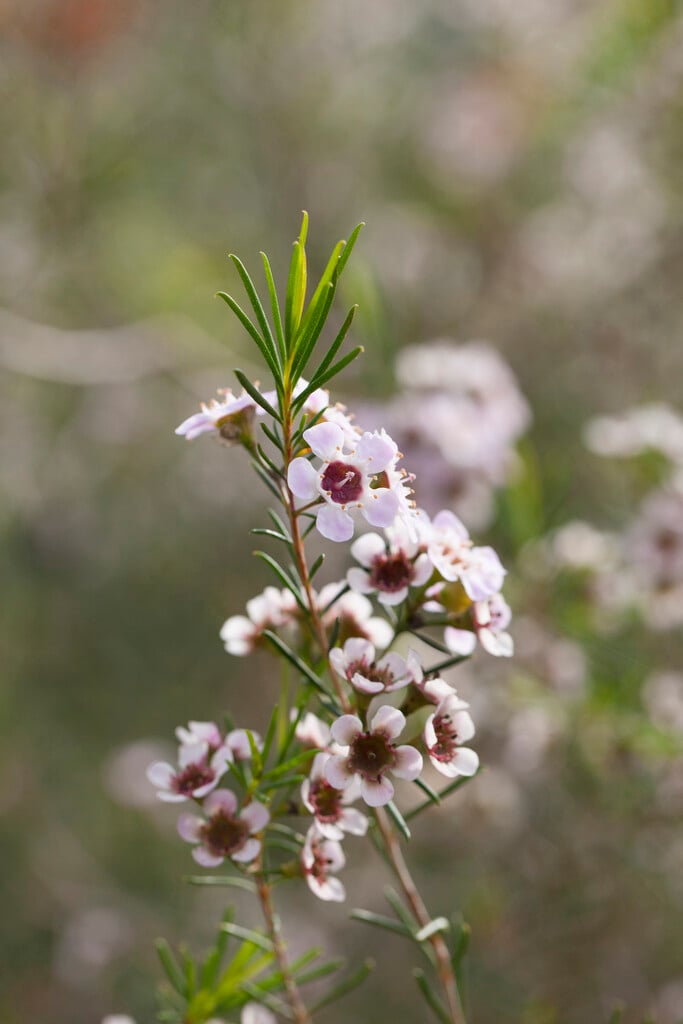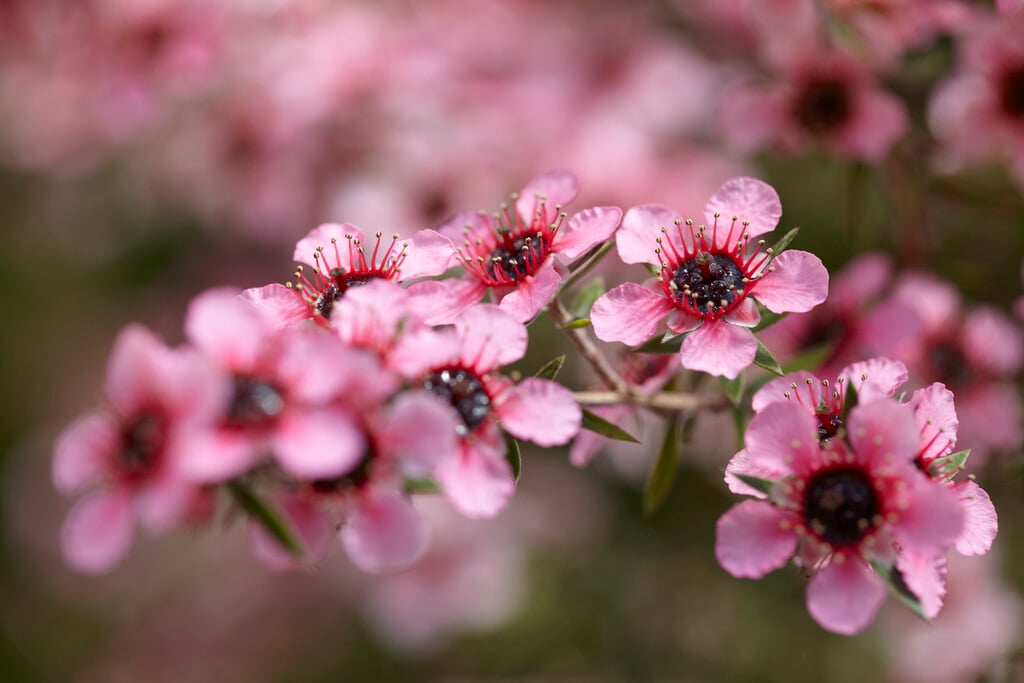Chamelaucium uncinatum
Geraldton waxflower
An Australian evergreen shrub with an open and spreading habit, becoming denser with age. The dark green leaves are very fine and narrow with hooked tips. Pink and white small waxy flowers are held in clusters, with an eye catching darker centre. These long lasting blooms are used as cut flowers, where you can enjoy them for a few weeks
Size
Ultimate height
2.5–4 metresTime to ultimate height
10–20 yearsUltimate spread
2.5–4 metresGrowing conditions
Moisture
Well–drainedpH
Acid, NeutralColour & scent
| Stem | Flower | Foliage | Fruit | |
| Spring | White Pink Purple | Green | ||
|---|---|---|---|---|
| Summer | White Pink Purple | Green | ||
| Autumn | Green | |||
| Winter | Green |
Position
- Full sun
Aspect
East–facing or South–facing or West–facing
Exposure
ShelteredDrought resistance
Yes Hardiness
H3Botanical details
- Family
- Myrtaceae
- Native to GB / Ireland
- No
- Foliage
- Evergreen
- Habit
- Spreading branched, Columnar upright
- Name status
Correct
How to grow
Cultivation
Grow in poor free-draining sandy soil, in a sheltered and sunny location. They can be grown outside in very mild parts of the UK, but they need to be kept on the dry side over winter to prevent the roots from sitting too wet and rotting. Growing in a container helps to monitor the watering and makes it easier for moving indoors for winter
Propagation
Propagate by sowing seeds in spring, take greenwood cutting in early summer and semi-ripe cuttings in late summer
Suggested planting locations and garden types
- Coastal
- City and courtyard gardens
- Gravel garden
- Conservatory and greenhouse
- Cut flowers
Pruning
Pruning group 8 , prune after flowering
Pests
Generally pest-free
Diseases
May be susceptible to root rot
Love gardening
Sign up to receive regular gardening tips, inspiration, offers and more
View our Privacy Policy
Get involved
The Royal Horticultural Society is the UK’s leading gardening charity. We aim to enrich everyone’s life through plants, and make the UK a greener and more beautiful place.

